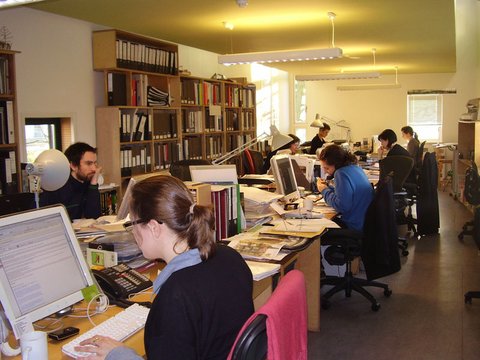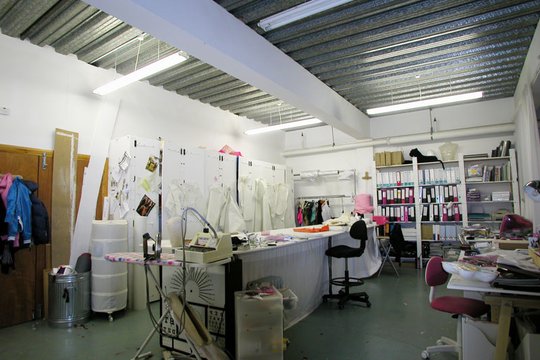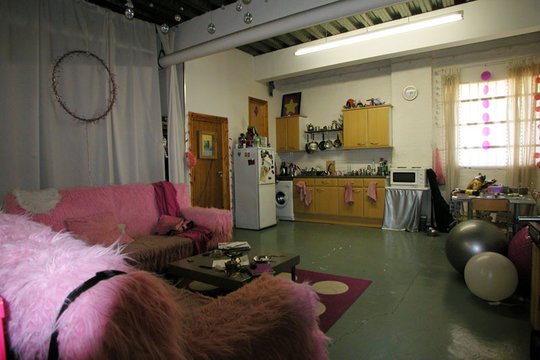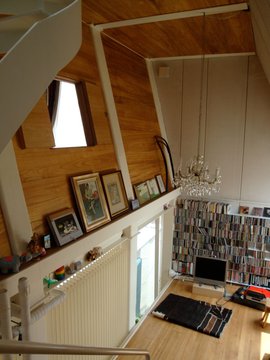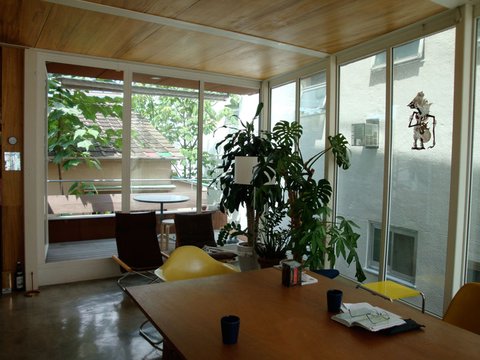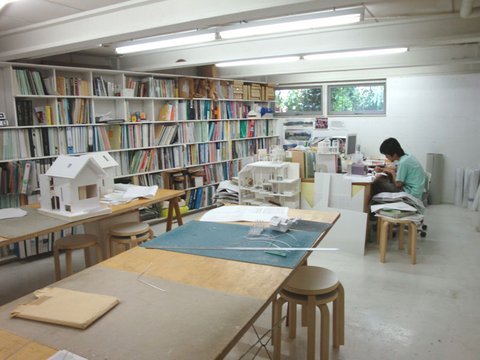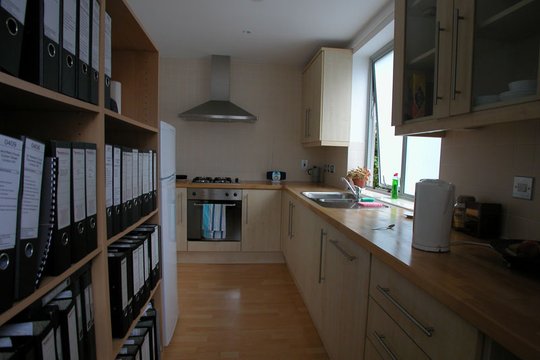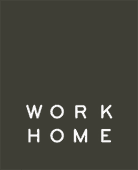Employees
Public and private space, and the thresholds between them, are important considerations where home-based work involves employees. Traditionally in nineteenth century master weaver's workhomes the solution was to have a sturdy locked door between the rear workshop and the front house.
This strategy is still in use in some contemporary workhomes. In Sarah Wigglesworth Architects' 2004 workhome at 9-11 Stock Orchard St, London, for example, the sliding plywood plane that separates meeting room from kitchen/dining/living room is locked during the working day. Although Wigglesworth's dozen or so employees are respectful of her privacy many strangers pass through the building each week and there is a concern about security.
A poorly defined separation between public and private space can lead to discomfort with employees. However this largely depends on the personalities of, and relationships between, the people involved. In a London architect's self-built workhome, having an employee passing through private spaces to reach the top floor studio is problematic, particularly for the architect's domestic partner. By contrast, the costume designer/maker inhabiting an open-plan industrial space has no such difficulties. She stops work in the middle of the day to cook, and she and her team of employeees eat together every day. She sees no boundaries between home and work... all space is dual-use, apart from the bed which is just shielded from view by a curtain.
A photographer takes a similar approach. When shooting he may have 15 people in his workhome, including dancers, costume assistants, make-up artists and the production team, either in the ground floor studio or in the first floor kitchen/ living room. He said:
“I don’t see any borders between my private and professional life at all. I find it very difficult to build them, and really there aren’t any. If I look at tax return, it’s blurry… I can travel all over the place, and stay on a bit longer… is it holiday or work? I'm still working, still taking pictures. I can’t say that personal time is not work time either… it just never happens.”
Yoshiharu Tsukamoto and Momoyo Kaijima, the husband and wife team behind Atelier Bow-Wow, have a similar but slightly different approach. They have designed the workhome they inhabit as a single volume. The private cabin-like bedroom at the top is the only space, apart from bathrooms, that has a door. During the week thework can expand to take over the whole building. But at weekends and in the evingings, the whole building reverts to 'home'.
Another approach is to de-personalise what are usually considered to be private spaces, for example the architect's kitchen/ technical library shown above.
Home-based workers with employees often prefer the 'live-adjacent' or 'live-nearby' models of workhome, which include a greater degree of spatial separation between the dweleling and workplace elements of the workhome. Wigglesworth's workhome falls into the 'live-adjacent' category; Louise Goodison of Cazenove Architects likes the 'live-nearby' solution. Her office, for her 10-strong practice, is in a mews building at the bottom of the garden of her Georgian terraced house.
